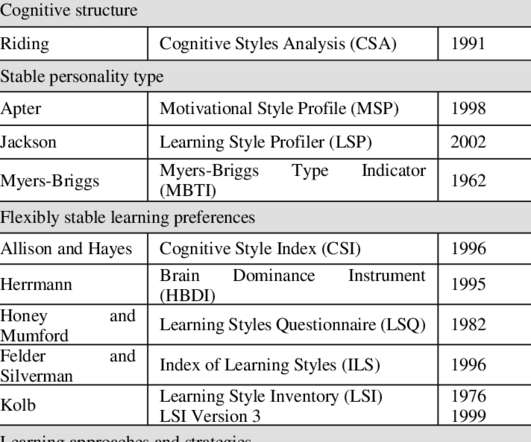The Phillips ROI MethodologyTM – Measuring Data at All Levels – Part 5
CommLab India
OCTOBER 20, 2016
Part 1 , Part 2 , and Part 3 of this series dealt with the Kirkpatrick Model of evaluating a training program. In the fourth part of the series, we saw how the Phillips ROI Methodology TM suggests that measurements be taken at every level. What can be measured: The learner’s perception of the training program’s relevance.

































Let's personalize your content